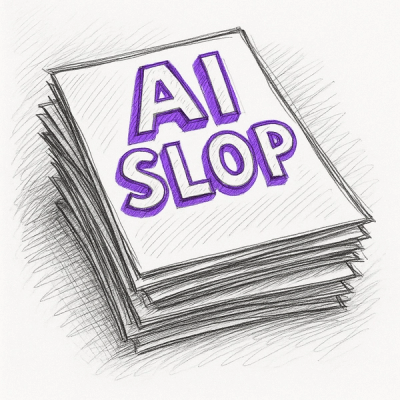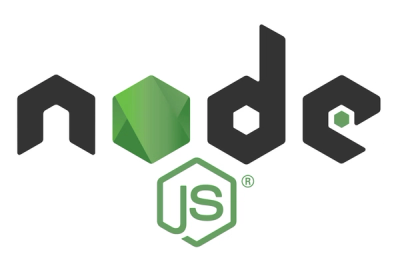
Security News
Django Joins curl in Pushing Back on AI Slop Security Reports
Django has updated its security policies to reject AI-generated vulnerability reports that include fabricated or unverifiable content.
js-sequence-diagram
Advanced tools
JS Sequence Diagrams [](https://libraries.io/bower/js-sequence-diagrams) [](https://travis-ci.org/bramp/js-sequen





Generates UML sequence diagrams from simple text
https://bramp.github.io/js-sequence-diagrams/
by Andrew Brampton 2012-2017
We turn
Alice->Bob: Hello Bob, how are you?
Note right of Bob: Bob thinks
Bob-->Alice: I am good thanks!
into
You will need Snap.svg, Web Font Loader (if you wish to use custom fonts), underscore.js (or lodash), and optionally jQuery.
Run bower install bramp/js-sequence-diagrams and include the scripts below:
<script src="{{ bower directory }}/bower-webfontloader/webfont.js" />
<script src="{{ bower directory }}/snap.svg/dist/snap.svg-min.js" />
<script src="{{ bower directory }}/underscore/underscore-min.js" />
<script src="{{ bower directory }}/js-sequence-diagrams/dist/sequence-diagram-min.js" />
also import the CSS if you plan to use the hand drawn theme:
<link href="{{ bower directory }}/js-sequence-diagrams/dist/sequence-diagram-min.css" rel="stylesheet" />
Not using bower? No problem. Just download the dependencies, and include them yourself. If you plan to use the hand draw theme, don't forget to put the two fontfiles in your css folder: /fonts/daniel/danielbd.woff and /fonts/daniel/danielbd.woff2
You can use the Diagram class like:
<div id="diagram">Diagram will be placed here</div>
<script>
var d = Diagram.parse("A->B: Does something");
var options = {theme: 'simple'};
d.drawSVG('diagram', options);
</script>
or use jQuery to do all the work:
<script src="{{ bower directory }}/jquery/dist/jquery.min.js" />
<div class="diagram">A->B: Message</div>
<script>
var options = {theme: 'hand'};
$(".diagram").sequenceDiagram(options);
</script>
For full examples check out the demo site.
var options = {
// Change the styling of the diagram, typically one of 'simple', 'hand'. New themes can be registered with registerTheme(...).
theme: string,
// CSS style to apply to the diagram's svg tag. (Only supported if using snap.svg)
css_class: string,
};
The following CSS classes are applied to the SVG diagram when using snap.svg:
sequence: Applies to main SVG tag.title: Applied to the title of the diagram.actor: Applied to the actors.signal: Applied to the signals.note: Applied to all notes.The diagram can then be customised, for example:
.signal text {
fill: #000000;
}
.signal text:hover {
fill: #aaaaaa
}
.note rect, .note path {
fill: #ffff00;
}
.title rect, .title path,
.actor rect, .actor path {
fill: #ffffff
}
Version 1.x of this library used Raphaël for drawing the diagrams, however, Raphaël had some limitations, and since disappeared from the Internet. We've decided to move to Snap.svg, which is a pure SVG implementation, instead of Raphaël which in addition to SVG, also supported VML (on Internet Explorer). This support of VML made it impossible to use some newer SVG capabilities. Native SVG allows us to use CSS styling, better font support, animations and more.
To aid in the transition Version 2.x will support both Raphaël and Snap.svg (preferring Snap.svg). If you include Raphaël instead of snap.svg, it will default to using Raphaël as the rendering library. For example
<script src="{{ bower directory }}/raphael/raphael-min.js"></script>
There are also four transitional themes, 'snapSimple', 'snapHand', 'raphaelSimple', 'raphaelHand', which force the use of either Snap.svg, or Raphaël.
The plan is to drop support for Raphaël in a future release, simplifying the library, and reducing the file size.
Raphael requires Cufon style fonts. Find the font you want in ttf or otf format, visit Cufon's site and process it into a javascript file. Then ensure the font is included via the HTML, or recompile after altering main.js. So far only the hand drawn font, Daniel Bold, has been included.
The build is managed by a Makefile, and uses various tools available from npm. Thus both make and npm are required, and can easily be installed on any Linux or Mac machine.
make
The Makefile will use npm to install all the dev dependencies, build, and test.
We use qunit for testing. It can be ran from the command line, or via a browser. The command line actually tests multiple permutations of lodash, Underscore, and with and without minification.
make test
...
Global summary:
┌───────┬───────┬────────────┬────────┬────────┬─────────┐
│ Files │ Tests │ Assertions │ Failed │ Passed │ Runtime │
├───────┼───────┼────────────┼────────┼────────┼─────────┤
│ 1 │ 13 │ 231 │ 0 │ 231 │ 250 │
└───────┴───────┴────────────┴────────┴────────┴─────────┘
or make and then open test/qunit.html in a browser. Finally a simple playground is available at test/test.html.
make cleanmakegit add -f src/main.js bower.json dist/*git commit -m "Released version 2.x.x"git push origin mastergit tag -a v2.x.x -m v2.x.xgit push origin v2.x.xOther themes
Automate the release process
Testing that checks the generated SVG is correct
Improve the hand drawn theme
Dozens of other issues on https://github.com/bramp/js-sequence-diagrams/issues
via GitHub
This project makes use of Jison, snap.svg, underscore.js, and the awersome Daniel font (which is free to use for any purpose).
Many thanks to Web Sequence Diagrams which greatly inspired this project, and forms the basis for the syntax.
Copyright (c) 2012-2017, Andrew Brampton All rights reserved.
Redistribution and use in source and binary forms, with or without modification, are permitted provided that the following conditions are met:
THIS SOFTWARE IS PROVIDED BY THE COPYRIGHT HOLDERS AND CONTRIBUTORS "AS IS" AND ANY EXPRESS OR IMPLIED WARRANTIES, INCLUDING, BUT NOT LIMITED TO, THE IMPLIED WARRANTIES OF MERCHANTABILITY AND FITNESS FOR A PARTICULAR PURPOSE ARE DISCLAIMED. IN NO EVENT SHALL THE COPYRIGHT HOLDER OR CONTRIBUTORS BE LIABLE FOR ANY DIRECT, INDIRECT, INCIDENTAL, SPECIAL, EXEMPLARY, OR CONSEQUENTIAL DAMAGES (INCLUDING, BUT NOT LIMITED TO, PROCUREMENT OF SUBSTITUTE GOODS OR SERVICES; LOSS OF USE, DATA, OR PROFITS; OR BUSINESS INTERRUPTION) HOWEVER CAUSED AND ON ANY THEORY OF LIABILITY, WHETHER IN CONTRACT, STRICT LIABILITY, OR TORT (INCLUDING NEGLIGENCE OR OTHERWISE) ARISING IN ANY WAY OUT OF THE USE OF THIS SOFTWARE, EVEN IF ADVISED OF THE POSSIBILITY OF SUCH DAMAGE.
FAQs
JS Sequence Diagrams [](https://libraries.io/bower/js-sequence-diagrams) [](https://travis-ci.org/bramp/js-sequen
The npm package js-sequence-diagram receives a total of 12 weekly downloads. As such, js-sequence-diagram popularity was classified as not popular.
We found that js-sequence-diagram demonstrated a not healthy version release cadence and project activity because the last version was released a year ago. It has 1 open source maintainer collaborating on the project.
Did you know?

Socket for GitHub automatically highlights issues in each pull request and monitors the health of all your open source dependencies. Discover the contents of your packages and block harmful activity before you install or update your dependencies.

Security News
Django has updated its security policies to reject AI-generated vulnerability reports that include fabricated or unverifiable content.

Security News
ECMAScript 2025 introduces Iterator Helpers, Set methods, JSON modules, and more in its latest spec update approved by Ecma in June 2025.

Security News
A new Node.js homepage button linking to paid support for EOL versions has sparked a heated discussion among contributors and the wider community.